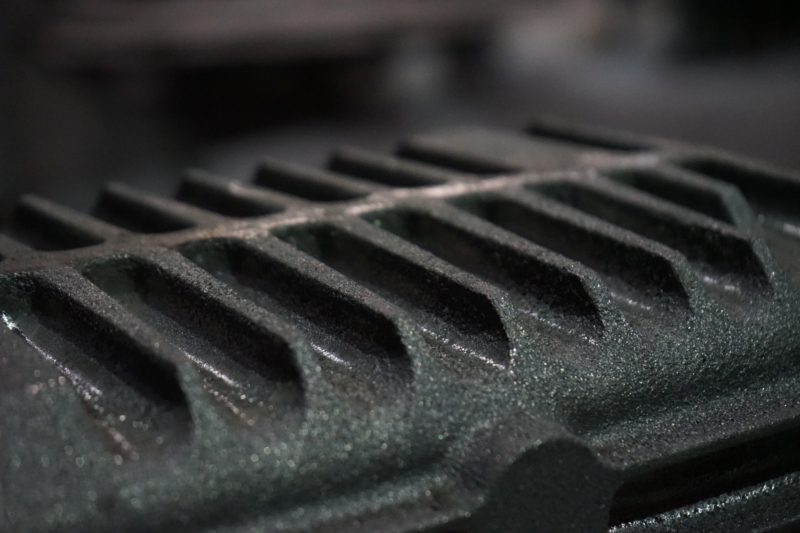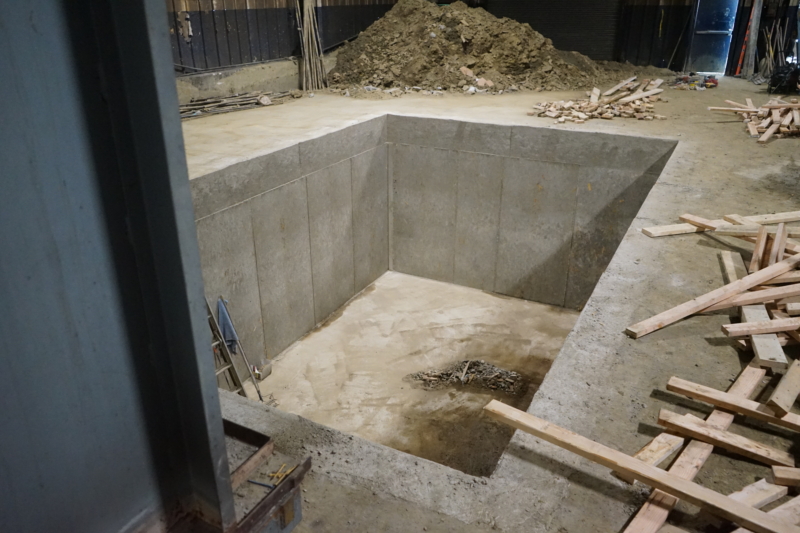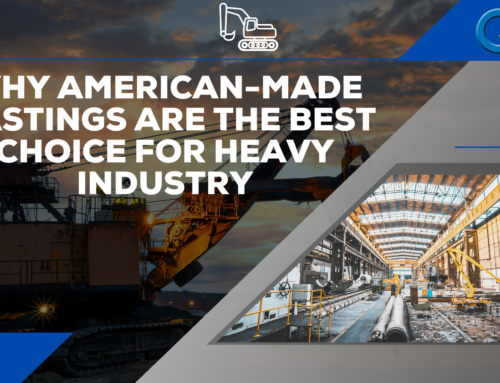In the world of metal casting, creating a durable, high-performing component doesn’t end at the mold. One of the most important steps in the process is heat treatment—a thermal process that improves the properties of cast metals to meet the demands of real-world applications.
At Quaker City Castings, heat treatment is a core part of our quality commitment. Whether you’re working with carbon steel, stainless steel, ductile iron, or high-performance nickel alloys, we tailor each heat treatment process to enhance strength, durability, and reliability.
In this guide, we’ll walk you through what heat treatment is, why it matters, the most common types of treatment, and how QCC is expanding our in-house capabilities to serve you even better.
What Is Heat Treatment in Metal Casting?

Heat treatment is a controlled process where metal castings are heated to specific temperatures, held at those temperatures for a period of time, and then cooled in a particular way—typically in air, oil, or water. This process alters the microstructure of the metal to improve its mechanical properties.
For example, it can increase hardness, reduce brittleness, relieve internal stresses, and improve resistance to wear or corrosion.
In essence, heat treatment allows cast metal to perform better in the field—whether it’s being used in heavy equipment, valves, pumps, or high-temperature systems.
At Quaker City Castings, we apply precise heat treatment cycles based on alloy composition, casting geometry, and intended use to deliver castings that meet or exceed your specifications.
Why Is Heat Treatment Important?
Heat treatment is not just a finishing touch—it’s a vital part of the casting process for most materials. Without it, even a perfectly poured casting may underperform or fail in its intended environment.
Here’s why heat treatment is critical:
- Relieves Internal Stress – Casting induces thermal and mechanical stress; heat treatment balances and reduces these stresses to prevent warping or cracking.
- Improves Mechanical Strength – Quenching and tempering processes can significantly increase tensile strength and fatigue resistance.
- Enhances Toughness and Ductility – Ductility is essential for parts exposed to impact or cyclic loading. Heat treatment ensures components are not brittle.
- Refines Grain Structure – Controlled thermal cycles result in more uniform and stable grain structures.
- Increases Wear and Corrosion Resistance – Some processes improve surface hardness or promote the formation of corrosion-resistant microstructures.
- Boosts Machinability – Softer, more uniform metal is easier to machine and less likely to deform during finishing processes.
For general manufacturers, having castings that are stronger, more stable, and longer-lasting means fewer failures, reduced downtime, and higher performance across the board.
Common Types of Heat Treatment for Castings
Depending on the alloy and application, different heat treatment methods are applied. Here are the most common processes used at QCC:
1. Annealing:
Annealing involves heating the casting to a specific temperature and then cooling it slowly, usually in a furnace. The purpose is to soften the metal, improve ductility, and reduce internal stresses. This is especially useful for improving the machinability of gray iron and certain steels.
2. Normalizing
Normalizing heats the metal above its critical transformation temperature, followed by air cooling. It produces a uniform grain structure and enhances mechanical strength and toughness. This is often used on carbon and low-alloy steels.
3. Quenching
Quenching involves rapidly cooling the metal in a medium like water, oil, or polymer after heating. It increases hardness and strength, although it can introduce brittleness if not tempered afterward. It’s frequently used for carbon steels and some alloy steels.
4. Tempering
Tempering is performed after quenching to reduce brittleness and increase toughness. The metal is reheated to a lower temperature and then cooled again. This step fine-tunes the hardness-toughness balance.
5. Solution Heat Treatment and Aging
Used primarily for stainless steels and nickel-based alloys, this process involves heating the metal to dissolve precipitates, quenching it rapidly, and then aging it at a moderate temperature to improve corrosion resistance, tensile strength, and thermal stability.
These processes are applied individually or in combination to meet your specific casting performance requirements.
Choosing the Right Heat Treatment for Your Casting
Selecting the proper heat treatment depends on a number of factors:
First, the base alloy plays a major role. Each metal responds differently to heating and cooling. For example, carbon steel might respond well to quench and temper, while austenitic stainless steel requires solution heat treatment to maximize corrosion resistance.
You’ll also want to consider the mechanical demands of the part. Does it need to withstand high stress? Abrasive wear? Elevated temperatures? These questions guide whether you need hardness, ductility, toughness, or corrosion resistance.
Size and shape also matter. Large or thick castings cool at different rates than small or thin ones, which affects how heat treatment must be applied.
At QCC, we take the guesswork out of the equation. Our team evaluates your specifications and recommends the best combination of alloy and heat treatment to deliver a casting that performs exactly as needed.
Expanding Our Heat Treatment Capabilities at QCC
To better serve our customers, we are currently building a brand-new heat treatment facility at our foundry.
This expanded capacity includes:
- A larger water quench tank, allowing for the treatment of larger castings and higher volumes
- The ability to handle more high-strength and specialty alloys
- Faster turnaround times with in-house thermal processing
- Increased quality control and consistency
The water quench tank is a critical addition. It allows us to rapidly cool parts after high-temperature heating to lock in strength and hardness. This process is vital for components that demand high tensile strength and wear resistance.
Construction is already underway, with the water quench tank hole fully excavated and preparation for installation in progress. We expect the facility to be operational by this summer, further solidifying Quaker City Castings as a one-stop shop for high-performance castings.
Stay tuned for updates as we bring this cutting-edge addition to life.
Final Thoughts
Heat treatment is essential to unlocking the full potential of your metal castings. Whether you’re looking to improve strength, durability, machinability, or corrosion resistance, the right heat treatment process can make all the difference.
At Quaker City Castings, we combine metallurgical expertise with cutting-edge equipment and a wide selection of alloys to deliver heat-treated castings that perform in the real world.
As we continue expanding our capabilities with a new in-house heat treatment facility, you can count on faster lead times, better consistency, and unmatched quality control.
Have questions about your project? Contact our team to discuss alloy selection, heat treatment recommendations, and how we can deliver the best possible results for your next casting.









Leave A Comment